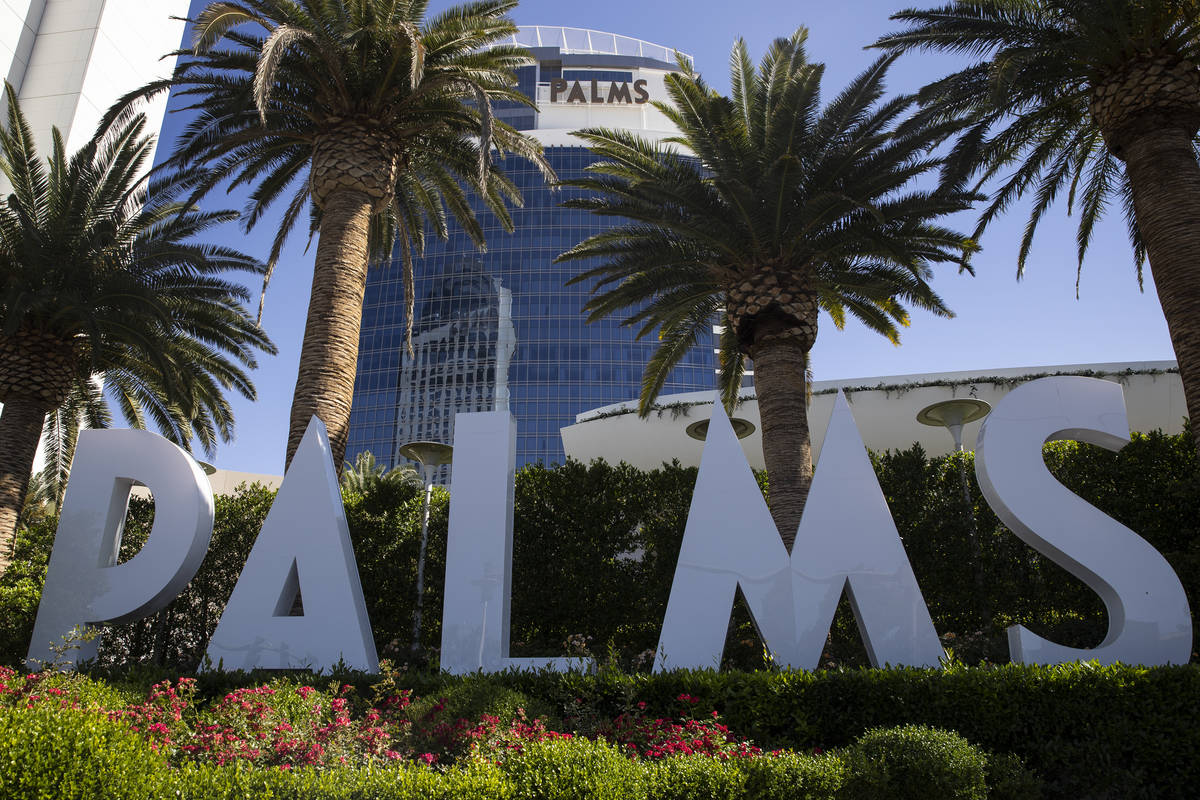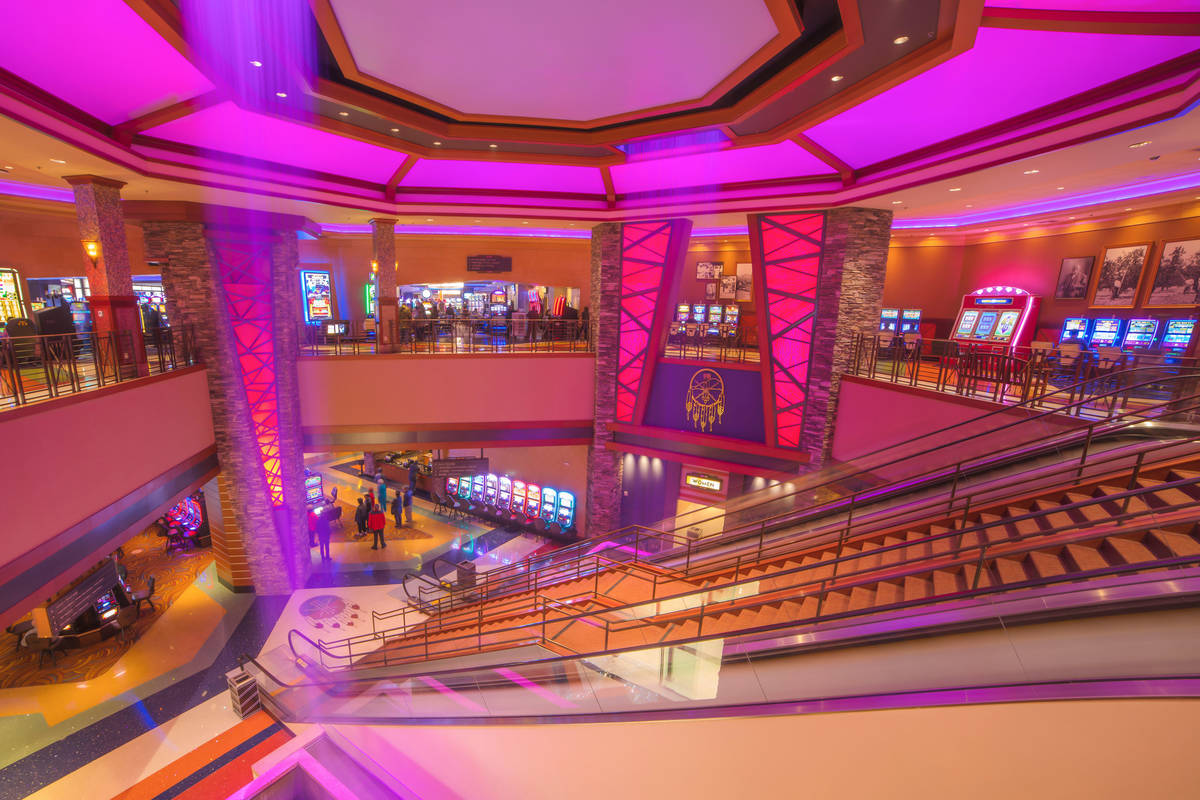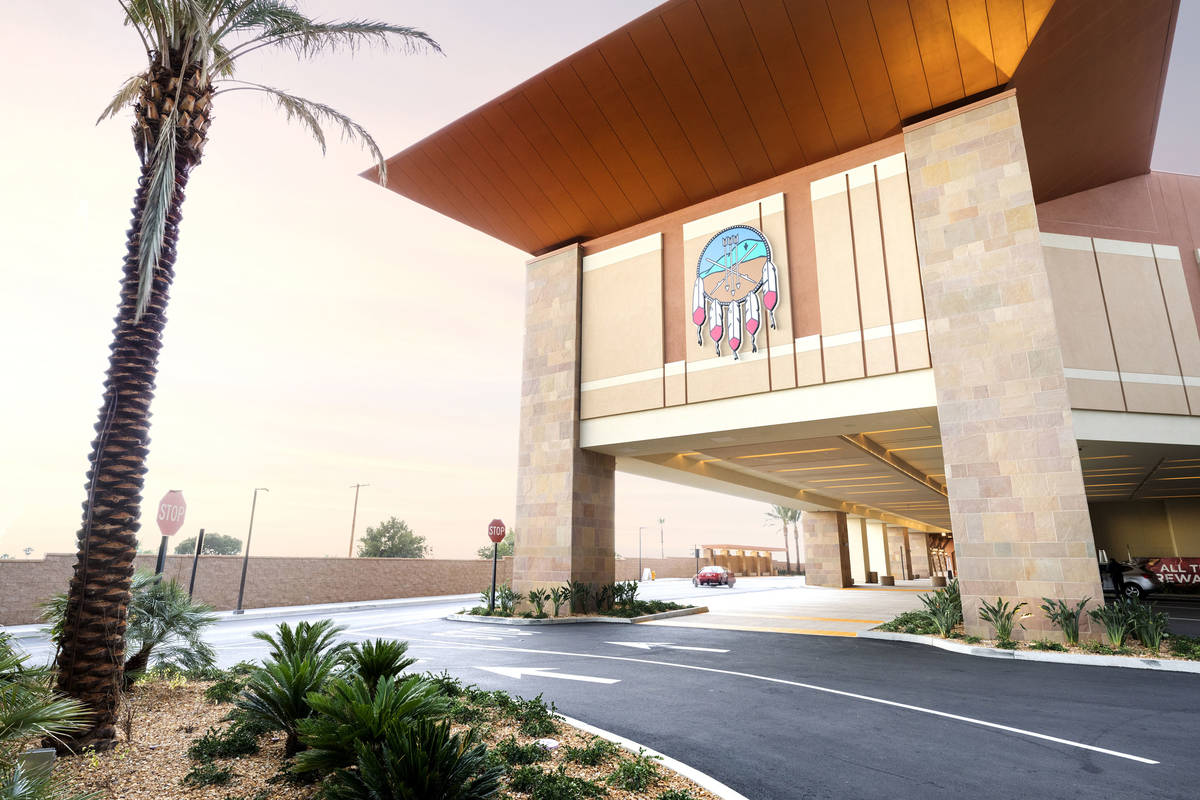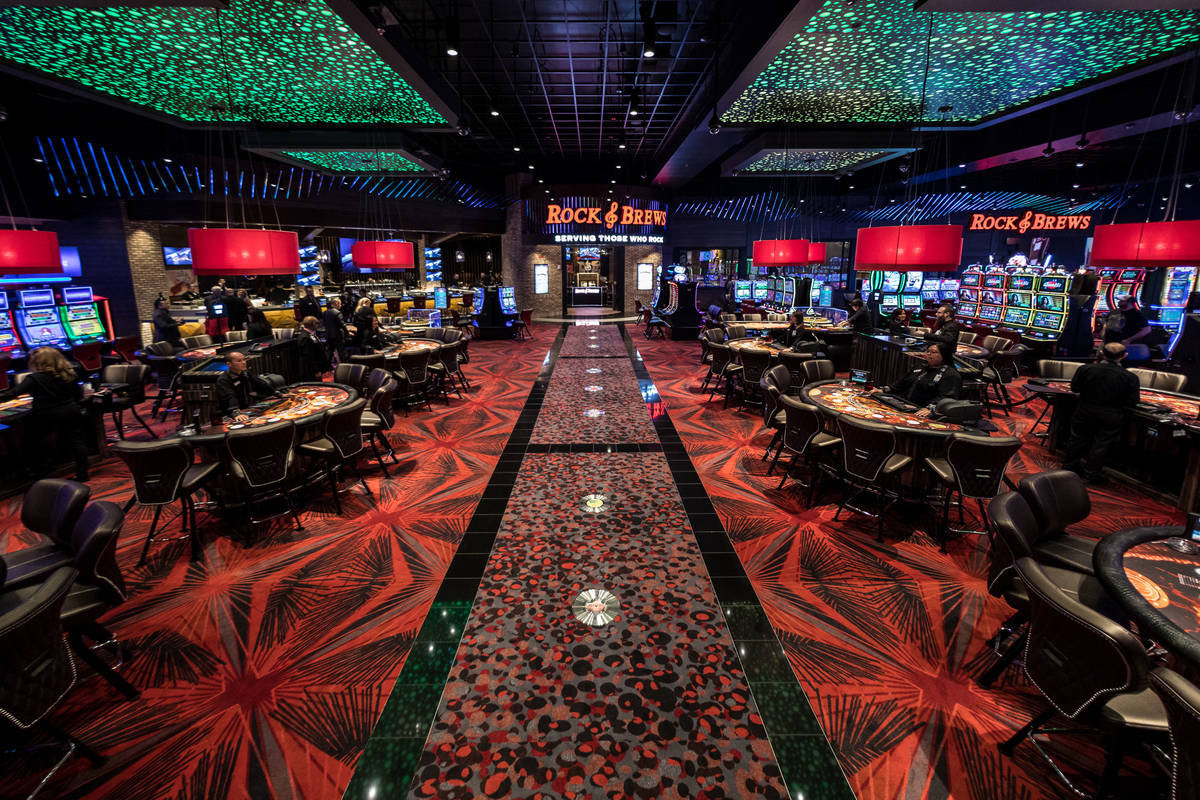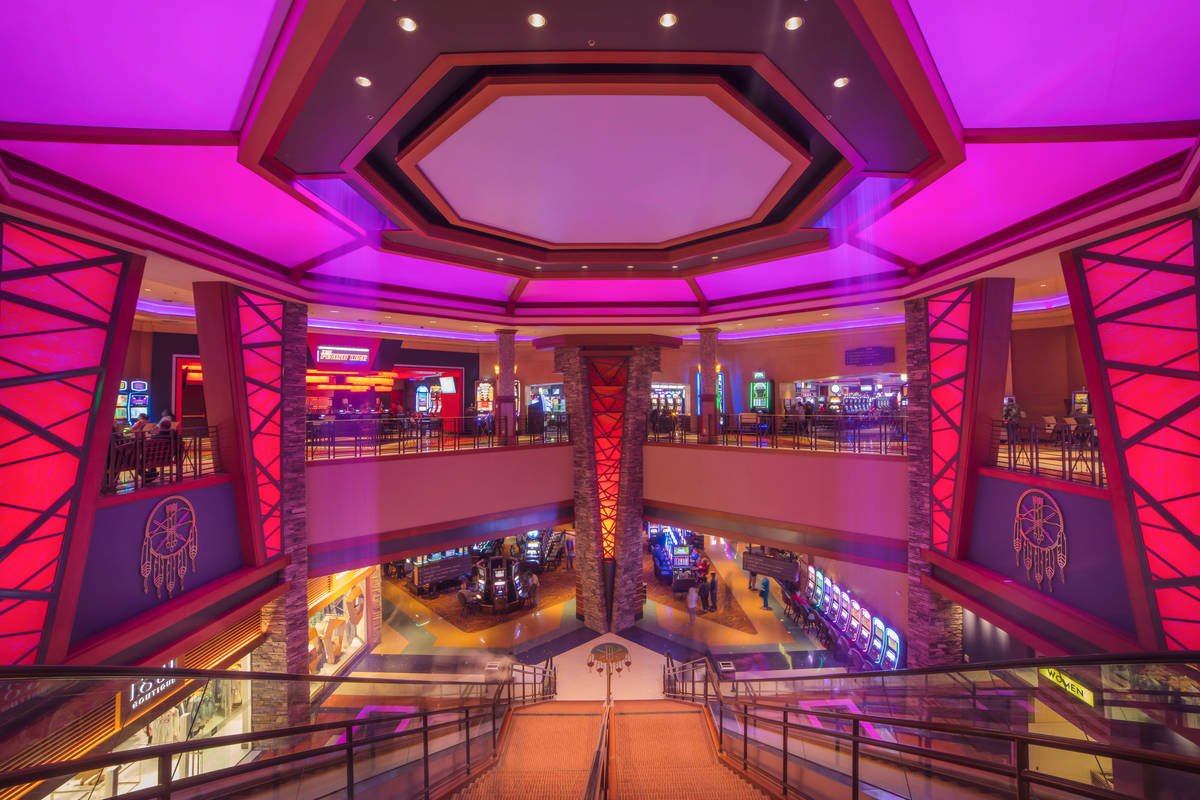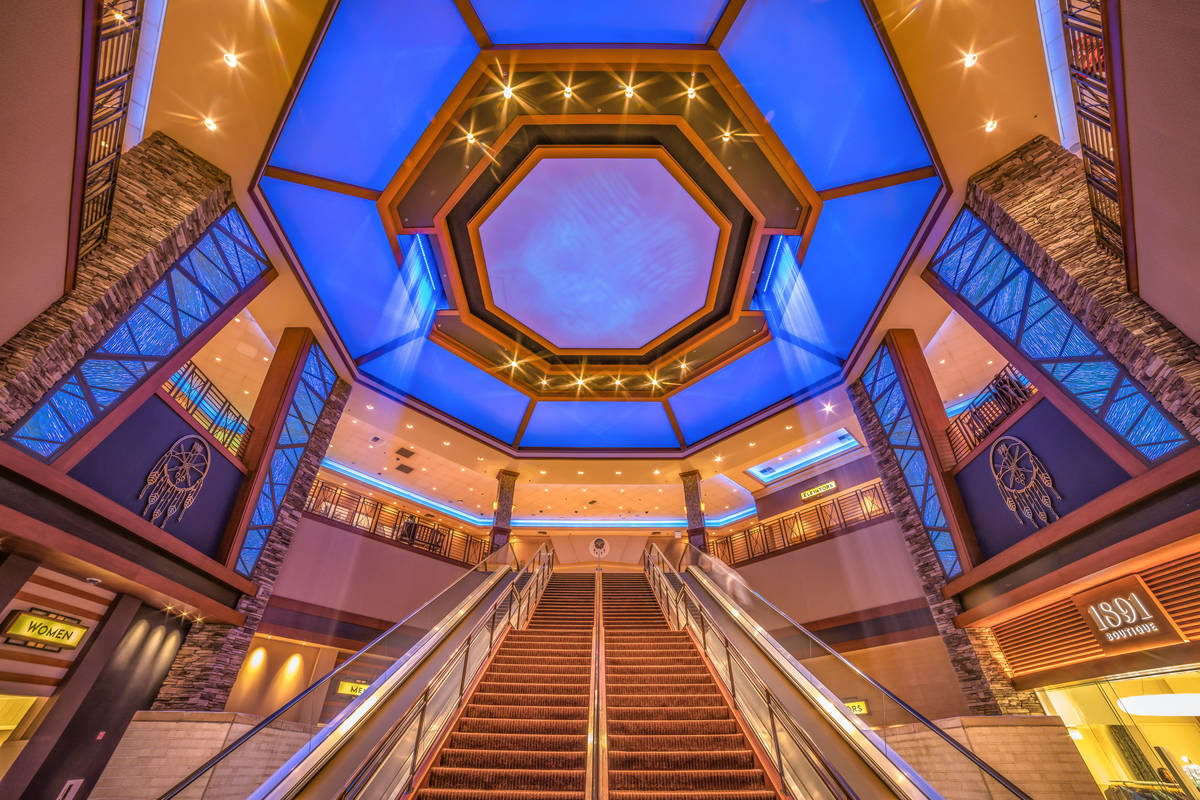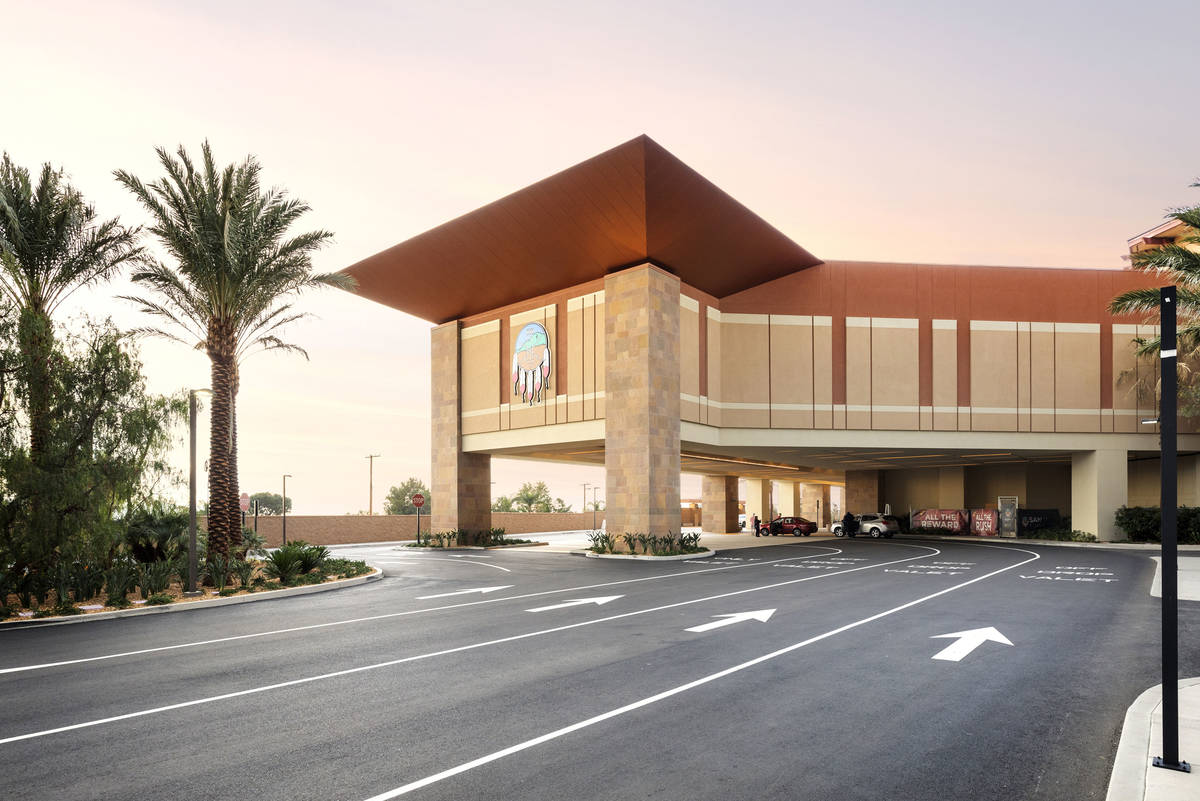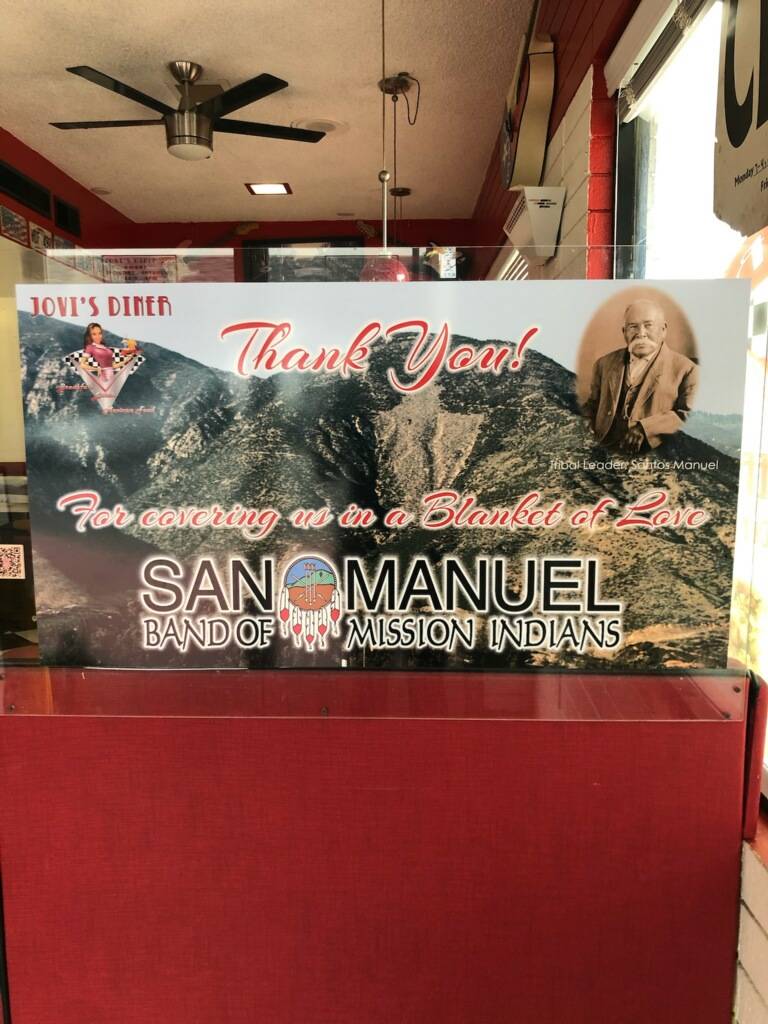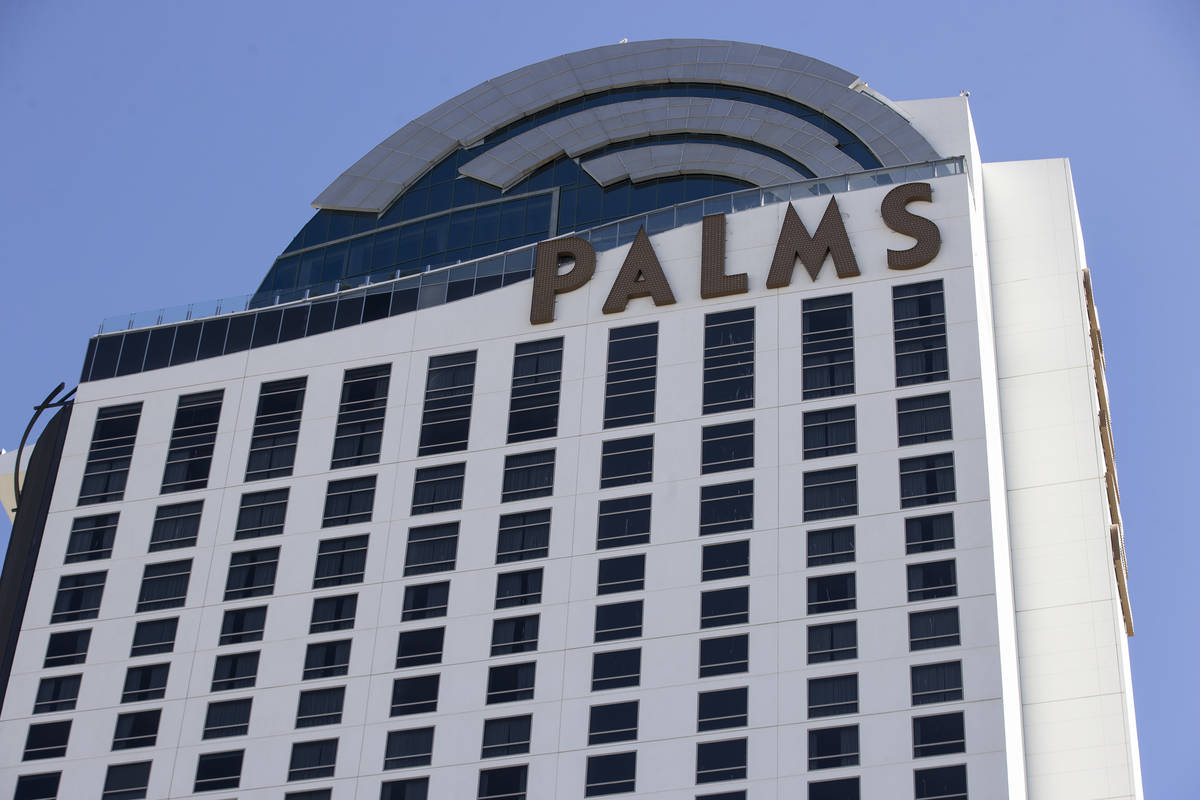San Manuel tribe to take stock of ‘beautiful property’ of Palms
It’s too early to say for sure what the Palms will look like under new ownership.
The San Manuel Band of Mission Indians plans to take time to assess what it has in its recent $650 million purchase. At the moment, “every and all things are on the table,” according to San Manuel Band of Mission Indians CEO Laurens Vosloo. But the off-Strip resort as it stands is a great start, and the tribe is excited to bring its expertise in hospitality, gaming and philanthropy to the Las Vegas community, he said.
“We want to build on what’s there right now. It’s a beautiful property,” Vosloo said Tuesday, adding that the resort will be “gaming focused.”
The Palms’ $690 million in renovations in recent years means the tribe likely won’t need to spend significant time and effort overhauling the place, he said.
People of the Pines
Today, the tribe’s reservation spans about 1,100 acres of land at the base of the San Bernardino Mountains.
But for thousands of years, the Yuhaaviatam clan, or “People of the Pines,” of the Maara’yam lived in the hills and mountains of the Mojave Desert, with their homeland spanning 7.4 million acres across what is now called Southern California. The cities of Barstow, Lancaster, Twentynine Palms, Hesperia, Victorville and San Bernardino all occupy Maara’yam historic land.
The tribe had systems of trade, commerce, governance, religion and community.
“Really everything that could be a part of even a modern-day society, tribes were already operating back before contact with Europeans,” said Jacob Coin, executive adviser to the San Manuel chairman, and the tribe’s spokesman on history, legislation and issues.
Spanish missionaries arrived in the late 1700s, taking many Maara’yam from their homelands and placing them into the San Gabriel Mission.
Californian statehood in 1850 and anti-Native American sentiments precipitated “an actual initiative to rid the land of Indians just so they could have access to these land areas that the tribes were living in, they were occupying and exercising governance,” Coin said. “So the only way that settlers believed they could do that was to just be rid of them.”
The settlers formed a militia in 1866 and “hunted down” the Maara’yam people, also known as Serrano, he said. The tribe’s leader, Santos Manuel, led the 30 remaining Yuhaaviatam clan members from their mountain homelands to the San Bernardino Valley.
“And from those 30 members is where this — I guess the modern era, if you will, of the San Manuel Band of Mission Indians — really started,” Coin said. They gained federal recognition of their sovereignty as a tribe in 1891.
‘They live it and breathe it’
Neighbors of the San Manuel Band of Mission Indians say Las Vegas is lucky to have the tribe join its community.
Why? Because they consider themselves lucky to have the tribe in theirs.
“Above all, San Manuel’s interest in the community is genuine. They’re the real deal,” said Patrick Roche, vice president of development at Goodwill Southern California. “They want to be part of the community. They live it and breathe it. And they’re really interested in knowing how they can help.”
San Manuel has a strong track record of philanthropy and productive relationships with other local governments and American Indian tribes, Coin said.
The San Manuel Band of Mission Indians recognizes that its purchase of the Palms mean it’s entering the ancestral homelands of other tribes, Coin said. Accordingly, San Manuel reached out to the Moapa Band of Paiutes and the Las Vegas Paiute Tribe to inform them of the decision.
“We wanted to acknowledge (the tribe) will be coming to Las Vegas as guests in your ancestral homelands and out of respect and friendship to these tribes,” Coin said. A Moapa Band of Paiutes representative confirmed the San Manuel tribe reached out Wednesday. A representative for the Las Vegas Paiute Tribe could not be reached.
The tribe’s philanthropic goals support education, health care, public safety and more. In February 2019, San Manuel presented Loma Linda University Children’s Hospital with a $25 million donation to support high-risk birth care at the facility.
In Southern California this year, the tribe has given grants of $1.5 million to a San Bernardino animal shelter; $20,000 to 50 small businesses hit hard by the pandemic; $100,000 to the Victor Valley College Foundation; and $4 million to Goodwill Southern California.
San Manuel presented a combined $9 million to two UNLV colleges last year — its largest out-of-state philanthropic gift to an educational or health care institution — and $250,000 across eight Las Vegas charities since December.
“If you look at San Manuel in the community and how they have a vested interest in the community, the tribe wanted to do the same thing in Las Vegas,” Vosloo said. “It’s not always just about business. But it’s about what they how they can make a difference in the community. And so before we even looked at an opportunity, we thought we could be part of the community.”
‘A new friend in SMB’
A $20,000 grant in February helped Jovanna Rodriguez and her business, Jovi’s Diner, at 123 N. E St. in San Bernardino. The check allowed her to bring employees back to work and catch up on bills, she said. It had been a rough year with COVID-19 restrictions causing a financial strain on her business, which she said was vandalized during summer protests over the murder of George Floyd.
San Manuel is well-known for its generosity in California’s Inland Empire, Rodriguez said.
“I always say San Bernardino belongs to San Manuel because they are the ones keeping the city alive and helping out,” Rodriguez said.
Another nearby shop, Viva La Boba, also benefited from a $20,000 grant. Like Rodriguez and her diner, Tansu Philip and her boba shop struggled during the pandemic. Philip, 25, let go a few of her employees and struggled to draw business with a slashed marketing budget.
“No day was guaranteed,” she said. “We were really taking it day by day in terms of sales and having enough to pay our employees.”
Philip found out in February that the San Manuel tribe accepted her grant application. She wasn’t told how much money she would receive, but she was just hoping it would be enough to fix a broken door.
Not only did the $20,000 allow her to fix the door, but she also gave more hours to employees, took staff out for an employee appreciation dinner and started marketing again.
“It’s no surprise to me that they had a program like this,” Philip said. “I just didn’t ever expect I would be a recipient.”
The tribe itself had a difficult time when the casino was closed because of the pandemic, Vosloo said. But even when times are tough for San Manuel, said Roche, of Goodwill Southern California, “They put their money where their mouth is” in a historically underserved region like the Inland Empire.
“The easy thing for an organization like SMBMI to do would be to say, ‘Oh, great, let’s go and do glamour projects in L.A. so we look like we’re playing in those leagues,’” Roche said, “and they’ve really been decidedly about: ‘We’re investing into the places that we live in and we work, and we’re investing into making them better.’”
The $4 million grant to Goodwill Southern California will help fund job training programs and other charities in Southern California, Roche said. The tribe has had an “enormous” impact in Southern California through its philanthropy and challenging the area’s businesses and nonprofits on how they can use that money to improve.
“I just dare say that Las Vegas is lucky to have a new friend in SMB,” Roche said.
^
Contact Mike Shoro at mshoro@reviewjournal.com or 702-387-5290. Follow @mike_shoro on Twitter.
Contact Mike Shoro at mshoro@reviewjournal.com or 702-387-5290. Follow @mike_shoro on Twitter.



